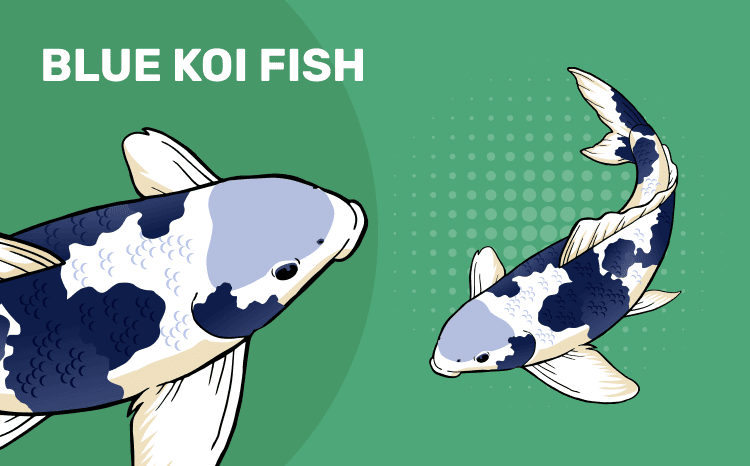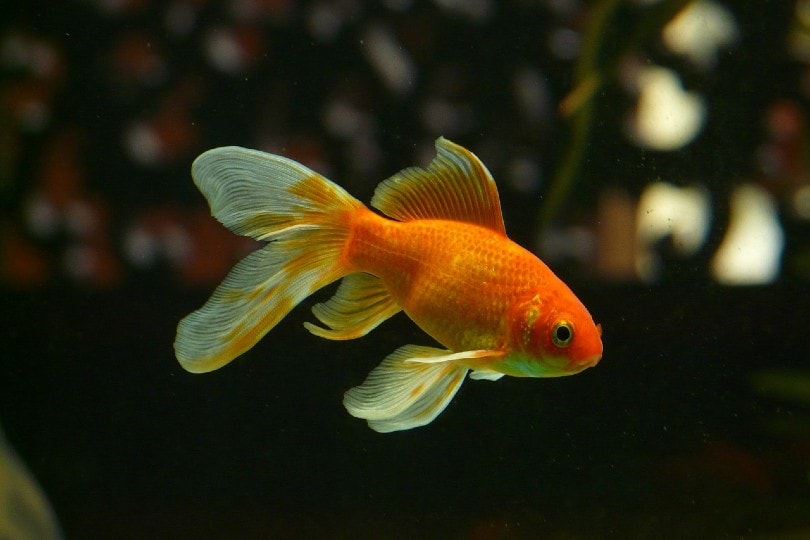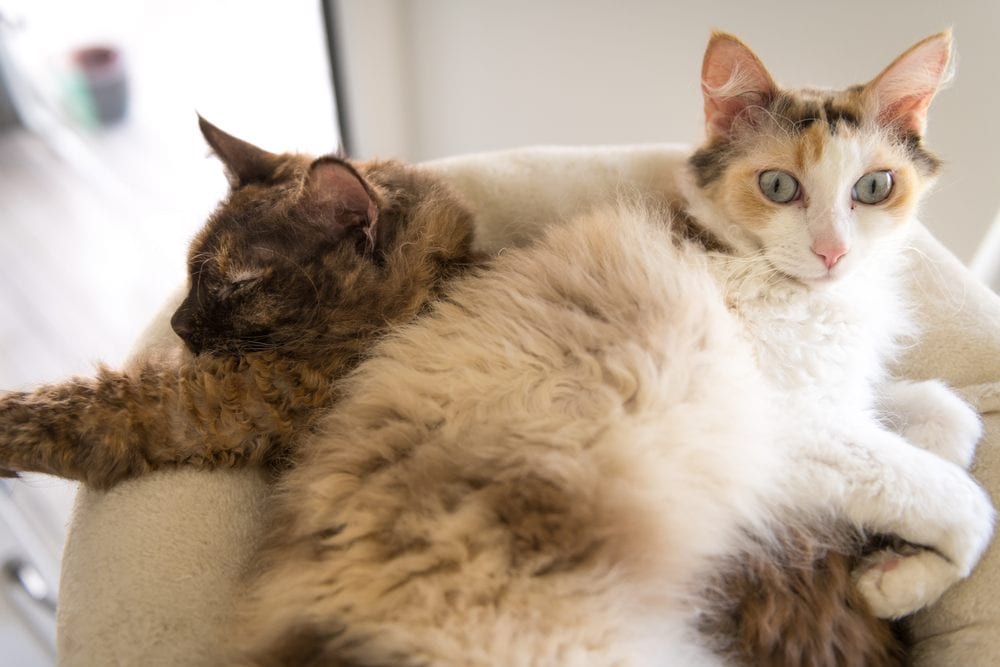Click to Skip Ahead
Koi fish are lovely to have in any pond or water garden, where they add color and variety. One of the many colors that koi can be found in is blue, which is considered more valuable than the standard colors.
Breed Overview
| Length: | 20–28 inches |
| Weight: | 9–16 pounds |
| Lifespan: | 25–35 years |
| Colors: | Blue, white, black, yellow, orange, cream |
| Suitability: | Large ponds and water gardens |
| Temperament: | Peaceful and social |
The Blue koi itself is not a variety of this fish but rather describes a koi with blue markings. This coloration is generally associated with Japanese koi, which are some of the most well-bred koi fish in the world.
The blue coloration is typically mixed with other colors to form a pattern on the koi’s body, so it is not common to find a koi that is a solid blue color. In some cases, the fish’s colorful markings may have a blue hue in direct lighting but will not appear blue at first glance. This can sometimes give them a blueish-black or purple appearance, which is a striking coloration.
Some varieties of koi, such as the Asagi koi, are blue-gray with other colored patterns on their bodies, such as red or deep orange.
Blue Koi Fish Characteristics

The Earliest Records of the Blue Koi Fish in History
Most of the earliest records of koi being domesticated were in China in the 4th century and in the 19th century in Japan. The Blue koi fish specifically is a type of Japanese koi that originated from eastern Asia and Japan.
All of the koi fish we see today descended from amur carp, which is a type of cyprinid fish found in Asia. These carp lived in the Aral, Black, and Caspian seas before later being farmed in China as a source of food by rice farmers.
These fish were picked for their hardiness and adaptable nature, which enabled them to live in rice paddies. It did help that the carp had fast growth and were easy to breed. It is possible that they developed color mutations in their wild habitats, but they were likely only recognized when they were being farmed. The carp’s color mutations made the once greyish-bronze fish develop more vibrant colors and patterns.
Due to selective breeding by the Japanese in the early 1800s, koi are now available in many different varieties and colors that were limited during their early recordings. Early records show that koi have long had a symbolic meaning in Japanese culture, and they are an inspiration behind many Chinese and Japanese artworks.
Japanese koi breeders produced all sorts of new colors in addition to the common red and white coloration. The development of blue was also noticed and desired in these fish. Certain varieties are well known for having blue color combinations on their bodies. It is possible that the blue color mutation had already developed in wild populations before being noticed by the Japanese.
How the Blue Koi Fish Gained Popularity
When China invaded Japan, carp were still being bred as food. This is the main theory of how these colorful carp made their way into Japan, and it was the start of the creation of new varieties of the fish.
When koi made their way into Japan, they were bred for their colors and variety. It wasn’t until the early 1900s that they started to catch people’s interest. This is likely due to a Tokyo exhibition in 1914. It showcased brilliantly colorful koi fish and caught the interest of an emperor, who was gifted koi fish for his moat. This is believed to be the start of the fish’s popularity.
Koi fish were soon desired in Japan, and they were not only kept by emperors but also by people all around the world. The fish’s profound popularity led to the creation of new varieties, such as the Asagi, Kohaku, and Utsuri. Koi fish were found in white, black, blue, red, and cream varieties. Certain color combinations and fin types were more popular than others, specifically because of their rarity and desirability. Blue is a color that is desirable in koi fish and can be seen in many varieties.
Formal Recognition of the Blue Koi Fish
Since the koi fish’s rise in popularity, several clubs and societies have been created to appreciate them. These can be found across the country, from Alabama to Washington State. Florida and California seem to have the largest establishments of koi clubs and water garden societies.

Top 3 Unique Facts About the Blue Koi Fish
1. Asagi Koi Naturally Have a Blue Coloration
Perhaps one of the most common examples of a koi fish variety that has blue as a standard coloration is the Asagi. It has a netting-like pattern on its back that is dark blue. In some cases, the Asagi’s blue markings may appear black until the fish is moved into a brightly lit environment. This variety of koi fish was developed roughly 200 years ago, and although their coloration may look plain, they are one of the varieties that have a characteristic blue color.
2. Blue Koi Fish Can Grow to 36 Inches in Length, Sometimes Longer
Nearly all Japanese koi fish can grow to an impressive length of 36 inches. As a descendant of the large amur carp, many of these fish can grow to very large sizes if the environment allows it.
3. Blue Is a Rare Color Found in Koi Fish
Many of the more standard koi fish colors include red, white, black, and cream. The blue coloration can be found on few koi fish and is considered rare.

Does a Blue Koi Fish Make a Good Pet?
Koi fish make good pets if you can meet their care requirements. Since they can grow quite large, you will need to ensure that their pond size is appropriate. Although it is possible to start raising young koi fish in large aquariums, ponds and water gardens are ideal for most juvenile to adult fish.
A pond size of 1,000 gallons is usually ideal for several small- to medium-sized koi fish. The larger the pond is, the more room you give your blue fish to grow and reach their full adult size. Once you have gotten the pond size right and ensured that the water quality is good, their care is fairly simple onward.
A healthy and balanced diet is beneficial for these fish. Choosing a pelleted food that has color-enhancing properties can help with the vividness of your Blue koi fish’s colors. The pond should be equipped with a pond and filter to prevent the water from becoming stagnant and creating an unideal environment for the fish.


Summary
Blue is a valued color in koi fish, and only a few varieties naturally have a blue color. Blue is not a variety of this fish, but rather a variation of koi fish markings. They are descendants of amur carp in China, but the blue coloration was likely developed by Japanese breeding. When kept in the right environment consisting of a large pond and a filter and fed a healthy diet, Blue koi fish can grow up to 36 inches and live for over 20 years.
Featured Image Credit: You are free to use this image, but we do require you to link back to PangoVet.com for credit










